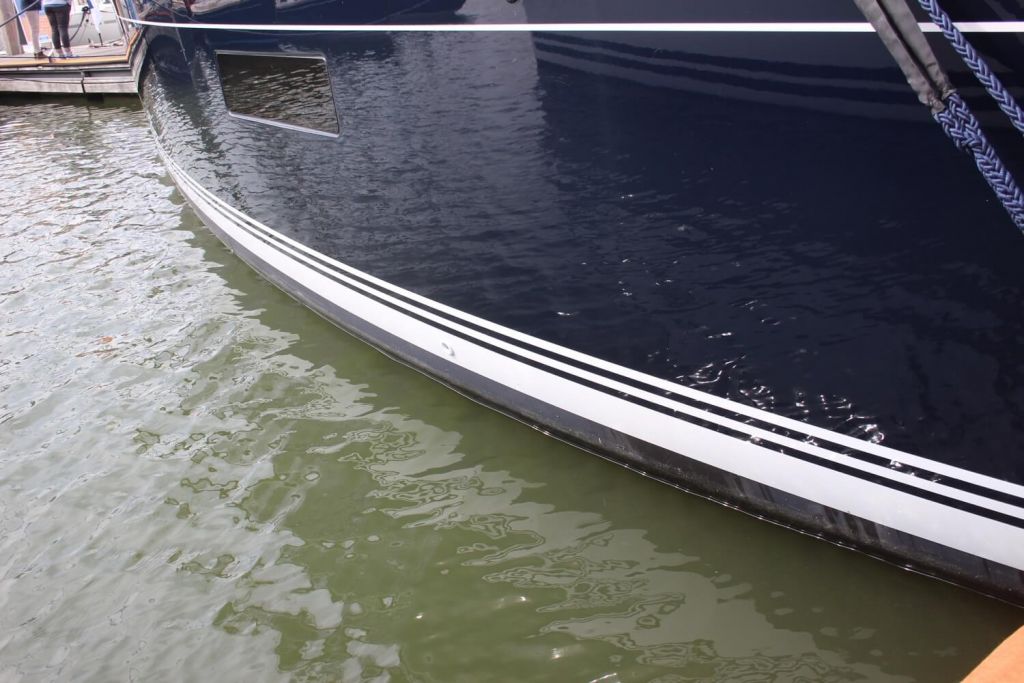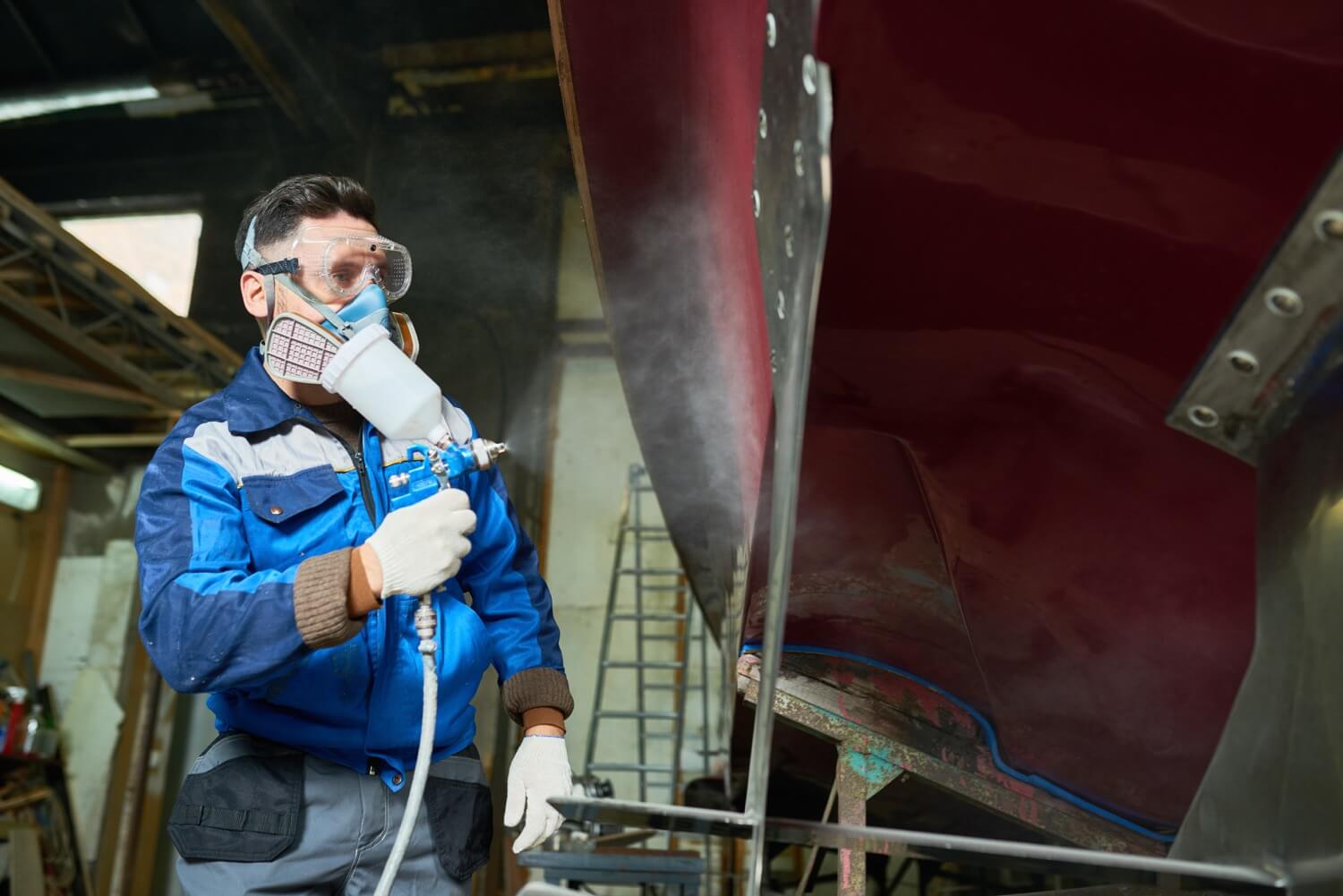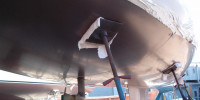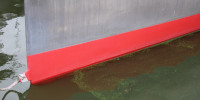Does Bottom Paint Slow Down My Boat?
Bottom paint, or antifouling paint, keeps fauna and flora from sticking to your precious hull. But is it a good idea performance-wise? This article answers the age-old question which has, to day, not been conclusively answered.
Does bottom paint slow down my boat? Bottom paint doesn't slow down your boat. Contrary to what you might think, a smoother surface does not mean less drag - quite the opposite. Boat hulls that use the right type of paint will actually go faster - and antifouling can be among them. Also, antifouling helps to reduce marine growth, increasing speed.
I know it sounds counterintuitive, but before you crucify me, read on. I will explain.

Antifouling Slowing Down Your Boat is a Myth
I apologize ahead of time, we will have to get into a bit of physics here. But it is the fun kind, where the teacher lights things on fire and so on. Not the equations and formulas kind. I was never very good at that, so it would serve little purpose here.
So as I said, bottom paint has little effect on your boat's performance. That does not mean you shouldn't be very careful when choosing an antifouling coating, but for different reasons than speed. More on that later.
The bottom line here is that bottom pain slowing your boat down is one of those resilient myths that keep hanging around for longer than they should because there are plenty of seemingly good reasons that extend the myth's lifespan.
Marine Growth Will Slow You Down - Not Paint
The main reason people choose to apply antifouling paint, the reason it was invented in the first place, is to ward off little critters and weeds and such that like to latch onto the parts of your boat that sits underwater.
Why is it you might choose not to provide mobile housing for these creatures? Some of them can weaken the structural integrity of the layer they are on and eventually, bit by bit, damage your hull.
The second reason is that these creatures and plants can be far from microscopic and if you have a few thousands of seashells and a weed plantation occupying your hull, this creates considerable drag. Which reduces speed. And the need for speed is what got you here in the first place, isn't it?
Bottom Paint To The Rescue
At first, it seemed that antifouling paint is a good idea. But then somebody came along and started arguing that such coating slows your boat down too. Resulting in quite the opposite effect to what you were aiming for in the first place - unhindered performance.
Why does it supposedly slow you down? One of the most common arguments against antifouling paint is that in the beginning, you might not notice much difference but as time goes by and you keep adding more and more bottom paint layers (since the old ones lose their biocidic capabilities with time) they will build up, get damaged, the coating will get rough, which creates drag. And voila, you are back at the starting line, facing the same issue you were trying to solve originally.
And as if that wasn't enough, somebody else came along and pointed out that many bottom paints aren't really smooth - especially the thick, copper-based ones, which actually tend to be quite coarse. And coarse surface must mean friction. Back to the start again. Damnit!
The Physics Lesson
Here comes the time for the aforementioned 'back to school' moment. Dear students, I will now attempt to challenge the bold proposition that smoother surfaces mean less friction. Daring, I know.
But consider this - take two objects with very smooth, flat surfaces - say two pieces of glass or mirror. Then place them on top of each other. Because of their smoothness, they seem to have almost stuck together. The force necessary to pull them apart is quite significant. This is partially because of molecular attraction that happens when two smooth surfaces get close.
On the other hand, if you were to sandpaper these pieces of glass, making them rough, bumpy even, you would find they won't stick together as easily anymore.
I know, I know, this is partially because of the lack of air in between them, but the point remains - two smooth surfaces tend to stick together. The water surface is no exception. If you fill a glass with some water and look at the edges, you will see the liquid sort of go up the glass walls there a bit.
Back To Boat Paint
To take this newly learned knowledge to our boatyard - if you dig around in people's experiences and opinions, you will find some say that roughing up the paint so that it is not glossy helps the speed. Though I haven't conducted or found a scientific experiment that would prove this, it seems to be the right thought process.
For an overview of the fastest antifouling paints, be sure to check out William's comprehensive article The Fastest Boat Bottom Paints: Antifouling for Speed.

The Slippery Slope of Online Forums
If you have been searching the mighty internet for a while, you might have noticed that there are not many credible sources when it comes to answering the question related to bottom pain and performance.
In fact, most of those who seem to give you a clear cut answer (whether towards a yes or no direction) are providing anecdotal evidence at best and oftentimes seem quite zealous about the camp they belong in. Although I might get a few hateful emails after this, I strongly advise you against drawing conclusions from posts of well-meaning but biased boat owners who 'could swear there was a few mph difference after applying the bottom paint'.
Measuring such a thing to achieve dependable results is near impossible outside of a controlled environment - a small increase in waves height will have an effect on your boat's speed, so will the wind and weight. So unless you are measuring something like this in a closed pool with two boats identical in shape, size, weight and engine performance, you can't expect to get credible results. Especially if what most people swear by is a 1-2 mph speed reduction.
Solid Conclusion?
All in all, even if you choose not to believe me, and instead trust the popular pub talk opinion I endeavor to call a myth, you will find that the general consensus of the majority of those who are against bottom paints speak of performance differences so slight that unless you are a professional speedboat racer whose speeds are around 90 mph, you need not worry. Your cruises won't suffer.
Especially if you compare that mythical drag increase caused by paint to that of a colony of Seaworld living on your hull. Simply said, even without science backing our claims, even supposing I am wrong in everything I said until now, you are better off antifouling your boat than not doing it, performance-wise. That is unless you can store it above water or wash the critters and weeds off every week or so.
And to address the former claim that as the coatings pile up over years and get damaged, this creates an uneven surface, that part might be true. But this has little to do with the paint material itself, rather it is a maintenance issue.
So What Is There To Worry About?
Well, you might be concerned about the environmental aspect of it all. That can be a real concern - the reason antifouling paints work is because they use biocide. Yep, that's similar to genocide, means just about the same thing, just for smaller targets. This is usually based on cuprous oxide or copper and tends to leak out with use.
The water around gets poisoned, which poses a threat to marine life. If that's no concern, know that it is not good for humans either. The European Biocidal Product Regulation is not happy with the materials used and the US Environmental Protection Agency has similar doubts. In the US the use of these paints is already being limited on recreational boats, in California, the copper-based antifouling has nearly been banned altogether and in the Netherlands, the use has been limited too.
The question then shifts from whether you are losing valuable performance to whether you are losing valuable health. With environmental concerns being at an all-time high, we can expect antifouling as we know it to be out of the game rather soon.
The Dutch To The Rescue
Luckily alternatives are being developed right at this moment, ranging from ultrasonic systems to covers protecting the whole hull when the boat docks to silicone-based coating. The latter is called MacGlide and if that doesn't spell speed, I don't know what does.
To get back to the already mentioned Netherlands, a certain Dutch gentleman Rik Breur created a product called Finsulate which he got the 2018 Product Of The Year award for. This coating essentially covers the hull with thin hairs, creating a surface the sea creatures find hard to stick to. Mr. Breur looked to nature for inspiration, found that naturally hairy surfaces are avoided by critters and weeds as a residence of choice and simply replicated this finding artificially.
So although there are many debates surrounding antifouling paints, some of which this article hopes to have put an end to, and some of which this article hopes to fuel, the future looks bright.
Did you find the answer to your specific question?
👍 4 👎 3



Leave a comment